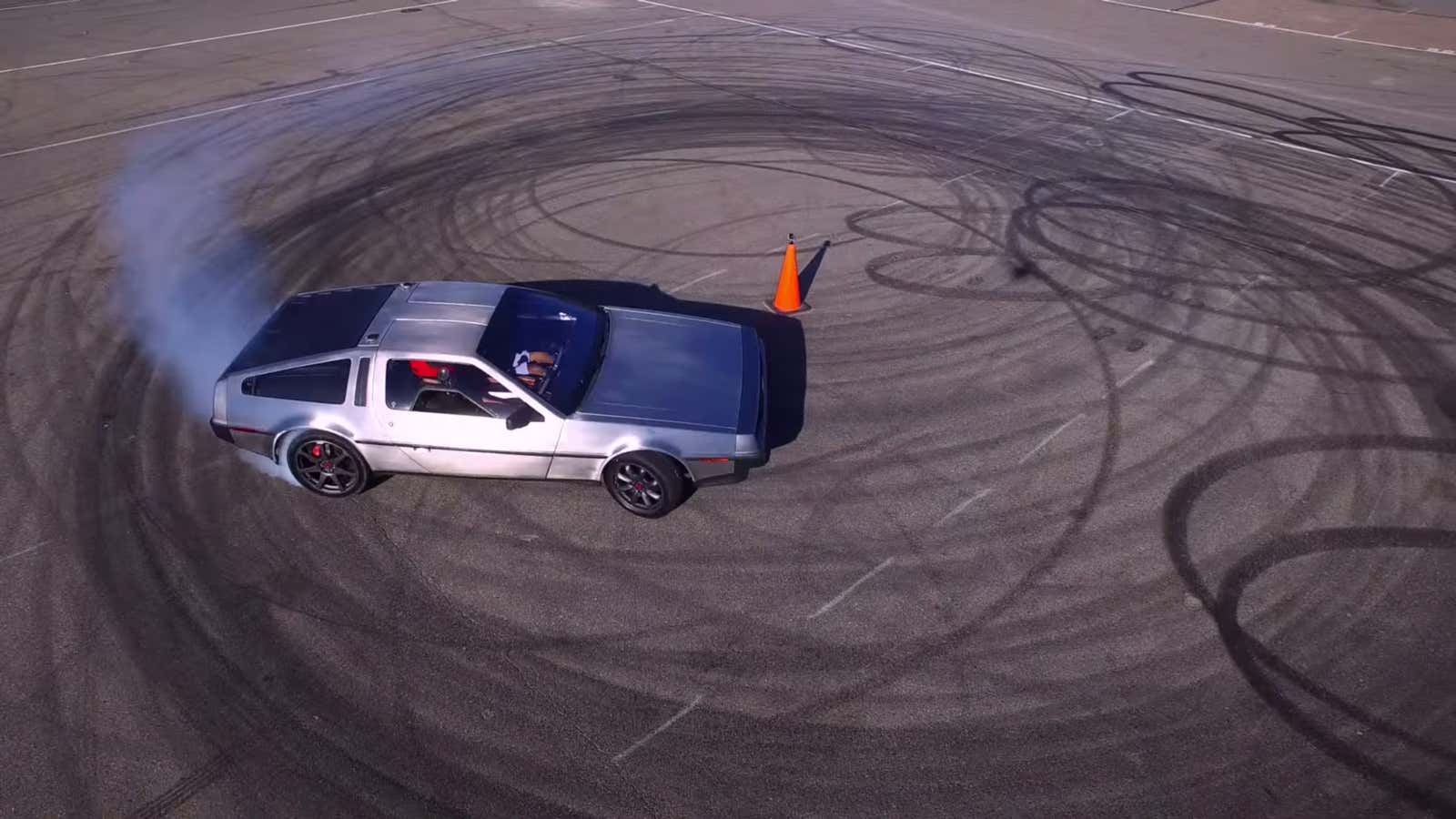Today, Oct. 21, 2015, is supposed to be the day when “we don’t need roads”—when our cars can fly, run on garbage, and travel through time. That’s according to the writers of 1989’s Back to the Future Part II.
While they actually got a lot right about technology in 2015 (down to Marty McFly’s Nike’s self-lacing sneakers), our cars are still sadly grounded. But a group of scientists from Stanford University, in partnership with Renovo Motors, an electric car startup, converted the iconic car model from the movie trilogy—a 1981 DeLorean—into a self-driving electric car. The program, naturally, is called the Multiple Actuator Research Test bed for Yaw control. Or MARTY, for short.
Where this car is going, it will certainly still need roads. It might, however, not need a driver:
The DeLorean is intended to help test “the physical limits of autonomous driving,” according to a release. In the video, two researchers set the car to self-driving mode, and then have it do endless donuts in a dusty parking lot.
“The sublime awesomeness of riding in a DeLorean that does perfect, smoke-filled doughnuts by itself is a mind-bending experience that helps you appreciate that we really are living in the future,” Jonathan Goh, a mechanical engineering grad student at Stanford, said in the release.
This approach to self-driving cars seems to be a little different from the thinking of companies in other parts of Silicon Valley. Google’s self-driving cars have in the past been deemed overly cautious on the road, driving defensively, presumably to ensure the safety of anyone they come into contact with.
The Stanford researchers, on the other hand, say they took inspiration from rally car drivers. ”In our work developing autonomous driving algorithms, we’ve found that sometimes you need to sacrifice stability to turn sharply and avoid accidents,”Stanford Professor Chris Gerdes said. “The very best rally car drivers do this all this time.”
So Stanford’s DeLorean can drift like in that not very good movie, accurately controlling both the throttle and the steering at the same time if need be. ”When you watch a pro driver drift a car, you think to yourself that this person really knows how to precisely control the path and angle of the car, despite how different it is from normal driving,” Goh said. “Autonomous cars need to learn from this in order to truly be as good as the best drivers out there.”
The goal is to have the car race around a track, drifting to avoid obstacles in its path, and even potentially racing a human driver. But right now, the car can just do very accurate donuts.
